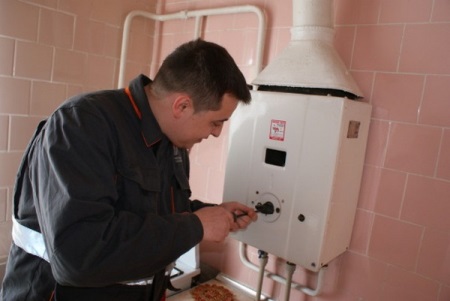Repair of gas boilers and troubleshooting
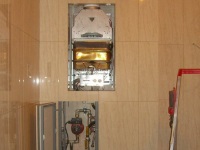
Flow-through heaters that use natural gas are the most common water heaters. Like any technique, they are subject to wear and tear and often break down. In order for the owner of the speaker to be able to determine what kind of malfunction has occurred, it is worth it to learn in advance about the device of the gas boiler, and about the most common problems with this kind of equipment.
The structure of columns and their types
The standard speaker is a metal box, to which the pipes are connected - water and gas. Inside the box is a tubular heat exchanger, through which the water moves in the unit. Also, the main part of the speaker is the burner, which in this equipment has two - the main and the igniter (it ignites the main one).
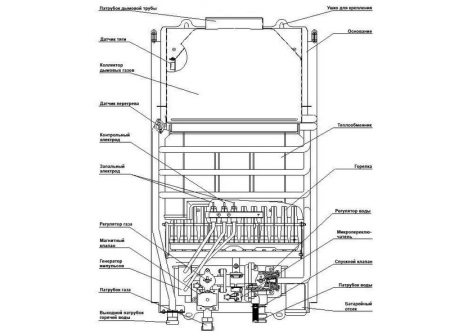
The igniter can be ignited in several ways, on the basis of which there are several types of columns. Some devices use piezor ignition, in others - ignition with the creation of an electric spark (such columns work on batteries or from a hydro turbine).

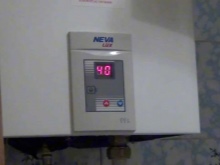
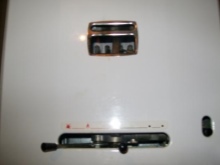
When the user opens the faucet, gas begins to flow into the column. The flame from the main burner quickly heats the water flowing in the heat exchanger, as a result of which warm water begins to flow from the open faucet. At the same time, all the products of combustion are discharged into the chimney located in the upper part of the device.
Typical problems
Most often, the owners of the gas water heater have to deal with the following situations.
The heat exchanger is clogged
Due to high water hardness or too high a temperature of water heating, over time, a scale builds up in the heat exchanger. This necessitates regular rinsing of this part with descalers (a solution of citric acid is often used at home). If you notice that warm water comes with a low pressure, while the pressure of cold water is high, it is a sign of a clog in the heat exchanger. Also, if there is too much scale, the heater may not turn on at all or turn off after a short time of operation.
See another way to clean the heat exchanger in the short video below.
The water does not heat up to the desired temperature
Having detected this problem, first of all, you should make sure that the settings of the unit are correct. If the settings are okay, the cause of insufficient water heating can be a contamination of the heat exchanger (both internally due to scale, and externally due to excess soot) or too low temperature of incoming water (this is typical for the winter period).
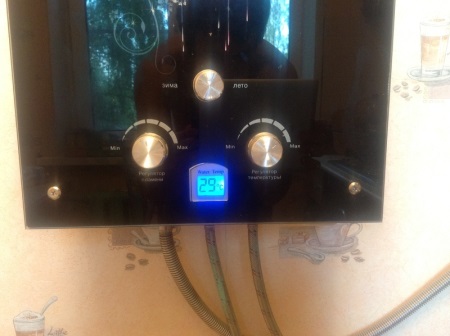
The boiler does not ignite.
The most common cause of this situation is insufficient ventilation, which can consist of both contamination of the ventilation well (soot accumulates in the chimney over time, and a foreign object can get in), or lack of sufficient air flow into the room (e.g. after replacing windows). For battery-operated devices, the situation when the device does not turn on at all is usually due to a complete discharge of the batteries. In addition, the equipment will not turn on if the water pressure is too weak (this also applies to the gas pressure), the diaphragm is damaged or there is a gas leak. In these cases, the protection system of the device will interfere with the operation of the heater.
The following video tutorial will help you to replace the membrane in the water block of the heater yourself.
The burner of the device goes out during operation
Such a malfunction can be caused by a problem with the temperature sensor, a worn diaphragm in the water unit, a bad draft, or a failed electrical valve.
Exchanger leakage
This problem is typical of low quality parts, in which copper is combined with various impurities. The surface of the heat exchanger will oxidize where the impurities are present and, over time, fissures will form there. In this problem, the radical solution is to replace the heat exchanger, but in many cases the part can be soldered with a soldering iron (if the damage is small) or a gas burner. Information on how to do it yourself can be found in our article "How to solder a gas water heater?
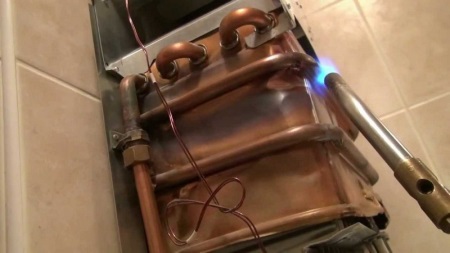
Leaking from the joints
It is associated with wear and tear of the gaskets, so the solution to this problem is to replace the gaskets.
You can hear popping noises when the heater is working
This can occur with improper regulation of gas supply, and the popping will appear with both an excessive head of incoming gas, and with insufficient pressure. It can also be caused by poor ventilation or dead batteries. It is not uncommon for the igniter jets to become clogged when the appliance is switched on. The user will be told that they should be cleaned by the changed color of the flame - instead of blue-blue, the flame will become reddish-yellow-orange.
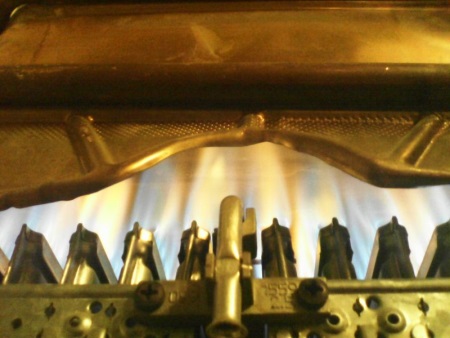
There is a gas leak
In this case, the device will not turn on at all, as it will trigger the appropriate sensor, and the user will feel the smell of gas. The only correct decision of the owner in such a situation should be to call the gas service.
